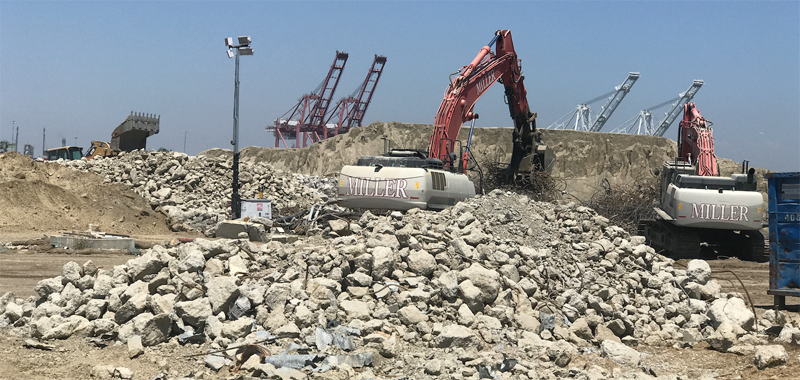ANNOUNCEMENTS

If you’ve ever remodeled a kitchen or cleared out a backyard full of overgrown trees, you know that the demolition is the easy part. Pull out the sledgehammer or chainsaw and get to it. And most of the time, it’s easy and fun. But then comes that inevitable point when you look down and see all the debris on the floor or ground that you now have to clean up. The same thing happens on the Bridge Project.
In the case of the NB710 connector ramp, last month’s demolition lasted a little more than three days, but created hundreds of tons of concrete rubble, old rebar and wood framing; click here for a time-lapse video of it. The wood framing was actually inside the hollow inner structure of the ramp, having been left there by the construction crews who built the ramp in 1990. The wood was removed ahead of time by the demolition crews to avoid having it mix with the concrete and steel during the takedown of the ramp. Ahead of the July 4th demolition, crews drilled holes in the road deck of the old ramp, dropped into the hollow interior and stripped it all out.
Watching the time-lapse video, you’ll see truck after truck pull onto the construction site, get loaded with debris, then drive off. Where did all the trucks go? A huge open area in the Port of Long Beach’s Pier S area on Terminal Island serves as a holding area for vast amounts of debris from the Bridge Project and other construction projects. All the rubble from the old Long Beach Civic Center demolition was brought there after those buildings were demolished.
In the case of the NB710 connector ramp, Miller Environmental was contracted to handle the demolition, removal and processing of the debris. Pictured above, Miller has begun separating the concrete from steel. Concrete chunks will be pulverized for reuse, and the old rebar will head to a nearby scrap yard for recycling. It will take months to process all of the debris on the ground at Pier S, but – slowly but surely – the small hills of rubble will turn into large mounds of fine stone that is much easier to transport and to reuse.